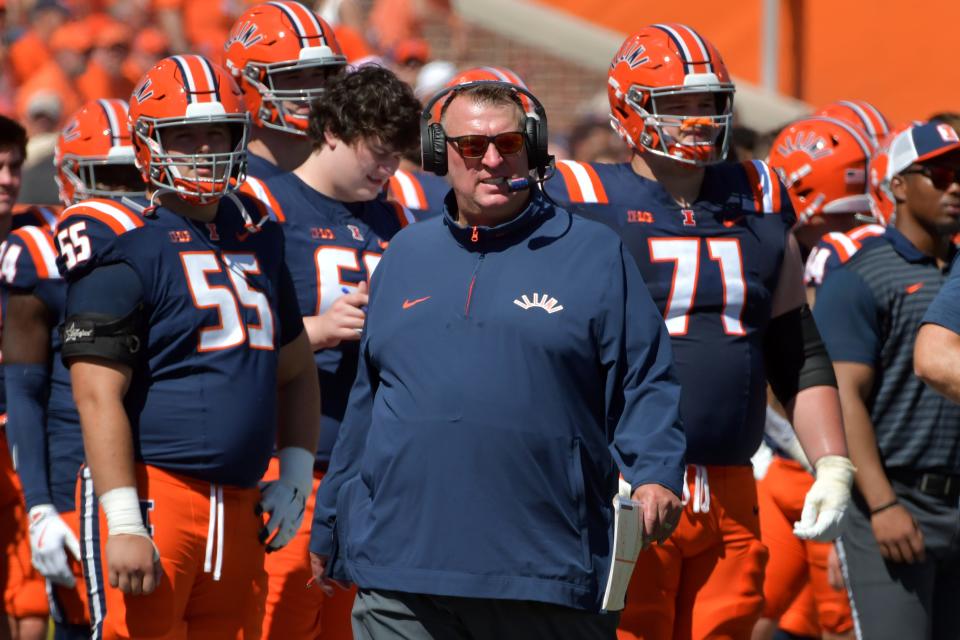What is simultaneous possession? Why Illinois notched interception vs Nebraska

It appeared Nebraska scored a touchdown on a 50-50 ball in the second quarter to take a 17-10 lead over Illinois football on Friday night, however, Fighting Illini cornerback Torrie Cox Jr. ended up with an interception after review.
Despite the ball appearing to first be in possession of both Cornhuskers receiver Isaiah Neyor and Cox Jr., with the tiebreaker going to Neyor for the touchdown, the officials replayed the moment and ruled an interception for Illinois. It was a nice break for the Fighting Illini, who regained possession and kept the score at 10-10 at the time.
REQUIRED READING: Illinois vs Nebraska score today: Live updates, highlights from Week 4 game
and it's an... INTERCEPTION!!!!!! 🤯@IlliniFootball pic.twitter.com/2Pd8wHSQXy
— FOX College Football (@CFBONFOX) September 21, 2024
Nebraska true freshman quarterback Dylan Raiola threw a fantastic ball on the play, but Cox Jr. made a better play on the defense of the throw.
Here's an explanation of why Illinois was ruled with an interception on the confusing play:
What is simultaneous possession?
Illinois came down with an interception midway through the second quarter against Nebraska on Friday night, but it wasn't without a conversation between officials.
The 50-50 ball from Raiola to Neyor was initially ruled a touchdown, as Neyor appeared to come down with the ball before Cox Jr. seemingly stripped the ball and took it himself. However, after replay, officials ruled the play as an interception.
According to the NCAA's playbook, a catch is defined as such:
"Gains possession (Rule 2-4-1) of a live ball in flight; or 2. Leaves his feet and firmly grasps a live ball in flight, the ball first touching the ground inbounds while still in his firm grasp; or 3. Leaves his feet, firmly grasps a live ball in flight and either first returns to the ground inbounds with any part of his body or is so held that the dead-ball provisions of Rule 4-1-3-p apply."
Meanwhile, the definition of a simultaneous catch is a bit different.
"A simultaneous catch or recovery is a catch or recovery in which there is joint possession of a live ball by opposing players inbounds," the rulebook states.
That means since Cox Jr. was granted an interception, Neyor and Cox Jr. were deemed not to have had simultaneous possession of the ball, as that would've given the tiebreaker to the receiver, resulting in a touchdown. That stands in stark contrast to the infamous 2012 Packers-Seahawks debacle, now dubbed the "Fail Mary," when replacement officials ruled simultaneous possession on a clear interception.
The play by Cox was more clearcut in favor of the Fighting Illini, with him even holding the ball longer than Golden Tate did on that fateful day for Seattle. But even now, 12 years later (the anniversary will be on Tuesday), simultaneous possession remains a rule that can be tough to call in realtime.
This article originally appeared on Journal Star: What is simultaneous possession? Why Illinois notched interception

